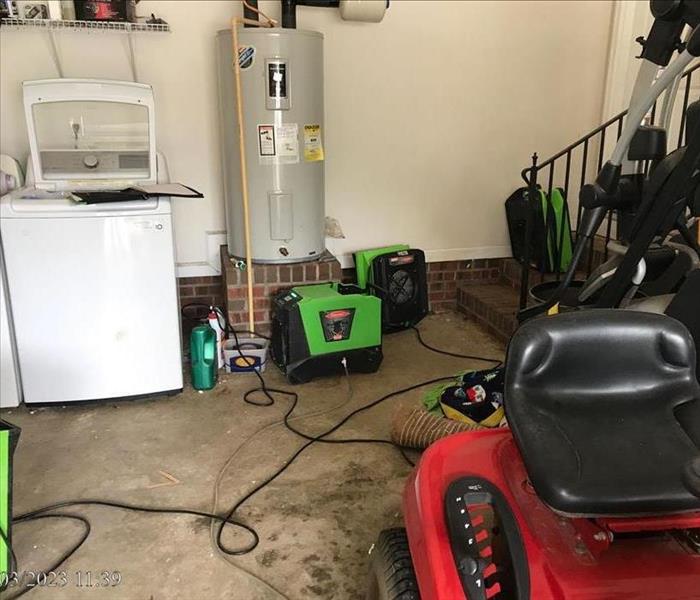Mold and Renovations: Tips for a Mold-Free Makeover
3/13/2024 (Permalink)
Renovating your home can be an exciting and rewarding experience. However, it is essential to be aware of potential mold issues that may arise during the renovation process. Mold damage can be a common occurrence during home renovations, especially if moisture sources are disturbed. In this blog, we will explore tips and steps to ensure a mold-free makeover for your home.
Before Starting the Renovation
Here are a few steps to take before beginning your renovation:
- Inspect for Existing Mold: Before beginning any renovation, thoroughly inspect your home for any signs of mold. Look for discoloration, musty odors, or any visible mold growth. If mold is found, it is crucial to address it and carry out mold remediation before proceeding with renovations.
- Address Moisture Issues: Identify and address any potential moisture sources in your home, such as leaks or inadequate ventilation. A dry and moisture-free environment is essential for preventing mold growth during renovations.
- Plan Proper Ventilation: Ensure proper ventilation in areas where renovations will occur. Well-ventilated spaces help maintain adequate air circulation and prevent excess humidity, reducing the risk of mold growth.
During the Renovation Process
- Containment Measures: If you are making changes in areas where mold is present, it is important to implement proper containment measures. This can include using plastic sheeting to isolate the work area and setting up negative air pressure machines to prevent mold spores from spreading to other parts of the home.
- Moisture Control: During renovations, avoid creating excess moisture. Ensure that water sources are properly sealed off and that surfaces are kept dry. Wipe up any spills promptly, and use dehumidifiers or fans to control humidity levels.
- Proper Removal of Mold-Infested Materials: If mold is found during renovations, it is crucial to remove mold-infested materials properly. Doing so reduces the risk of spreading mold spores and prevents further contamination.
- Effective Cleaning: Clean the renovation area thoroughly, especially after any mold removal. Use appropriate cleaning techniques and antimicrobial products to eliminate any remaining mold spores and ensure a mold-free environment.
After the Renovation
- Final Inspection: After renovations are complete, perform a final inspection to ensure that there are no signs of mold or moisture issues. Look for any signs of water damage, discoloration, or musty odors. If any issues are identified, address them promptly to prevent mold growth.
- Maintain Proper Ventilation: Maintain good ventilation and airflow throughout your home even after renovations are complete. This will help prevent excess moisture buildup and reduce the risk of mold growth.
- Regular Maintenance: Regularly inspect your home for any signs of water leaks, moisture buildup, or mold growth. Address these issues immediately to prevent further damage and keep your home mold-free.
Professional Mold Remediation
If you encounter significant mold damage or are unsure of how to properly address mold during renovations, it is recommended to seek professional mold remediation services. Professional mold remediation experts have the knowledge, experience, and specialized equipment to handle mold issues effectively and safely.
Renovating your home can be an exciting process, but it is essential to be mindful of potential mold issues. By following the tips and steps provided, you can help ensure a mold-free makeover for your home. Proper inspection, addressing moisture issues, implementing containment measures during renovations, effective cleaning, and ongoing maintenance will help prevent mold growth and maintain a healthy living environment. Consider seeking professional mold remediation services for any significant mold damage or if you are unsure how to handle mold during renovations.

 24/7 Emergency Service
24/7 Emergency Service
